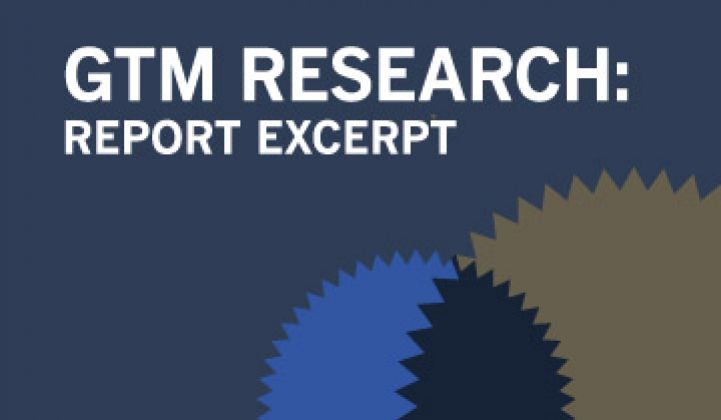A lot of noise and dust is being kicked up over the battle for control of the home energy management network. In one corner: ZigBee, a wireless low-power communication standard devised by industry players to address Wi-Fi shortcomings, and embedded into tens of millions of smart meters connected to utilities via AMI (advanced metering infrastructure) communication networks. In the other corner: ubiquitous Wi-Fi, already the de facto home wireless networking standard for homes with broadband internet access. Does the world really need another wireless protocol for the home if it already has Wi-Fi?
As with any good standards war, the gloves are off, religious zealots have raised their flags and the battle lines are drawn. White papers, press releases, briefing campaigns, editorials -- you know the drill.
Here’s a contrarian view. It doesn’t matter, at least not in the long haul. I reach this conclusion in our recently released Smart Grid HAN report.
At the end of the day, for home energy management to hit the big time, Wi-Fi needs ZigBee and ZigBee needs Wi-Fi. ZigBee, well, more specifically, the ZigBee Smart Energy standard created by the ZigBee Alliance, provides the industry with application-level standards needed to build home area networks. Specific features of ZigBee include prices, messages, commands and other data coming from a utility or circulating freely around the home via whatever protocol happens to be available. A companion profile, ZigBee Home Automation Provide, adds the ability to control remote devices. The first generation of ZigBee Smart Energy (1.X) was designed to run on a ZigBee network. The ZigBee Alliance is moving to develop another version to harmonize with IEC standards by creating a modular, layered architecture that more closely aligns with the OSI Reference Model. OSI parcels networked applications into a seven-layer modular architecture, each layer has clear functional delineation.
The second ZigBee Smart Energy (2.X) version currently in the works is being designed to use familiar TCP/IP transport and network layers, and a variety of wireless radios. Translation: ZigBee Smart Energy will be able to run on top of Wi-Fi or any other PHY/MAC. The diagram included in this article illustrates similarities and differences using the seven-layer OSI reference model as a basis for comparison.
Unfortunately, progress comes at a price. The indications are that ZigBee Smart Energy 2.0 is likely to be incompatible with 1.0 -- and if users decide to move to version 2.0 this spells trouble for utilities that have rolled out millions of smart meters with ZigBee Smart Energy 1.0 chips, since they face a potential stranded asset risk if they aspire to using the AMI channel to communicate with a potential coming wave of ZigBee 2.0 smart appliances and home energy management systems.
Enter stage-right the USNAP alliance with a universal modular interface. Similar to a USB port, USNAP promises to make changing networking “stacks” as easy as plugging and unplugging the CIM card on a mobile phone (not to be confused with the CIM common information model 61968-9 standard).
The 1.0 to 2.0 challenge makes broadband IP connections into the home an appealing workaround for utilities looking to conserve AMI bandwidth and dodge the stranded meter communication chip asset problem. Plus, a broadband connection keeps the AMI channel open for what it was originally designed to do: collect time interval smart meter data for billing. Add to this the emerging trend of the IP-connected living room (yes, the internet really is merging with TV at last), and the urgent mandate for protocol-independent Smart Energy Profile becomes clear. Indeed, protocol-independence is more than a checkbox item. It’s a critical success driver that needs to snap into place for home energy management to hit the big time.
The bottom-line is that smart grid industry standards need to be a collaborative industry effort. No matter how you slice it, ZigBee and Wi-Fi are likely to have a happy future together.
So the next time a press release comes out touting the advantages of one protocol over another, don’t take the bait. Focus on the end game: grid integration and system interoperability.
The upcoming GTM Research Report, Smart Grid HAN Strategy Report 2011: Technologies, Market Forecast and Leading Players, includes an in-depth examination of home energy management standards. For more information about the report, click here.



